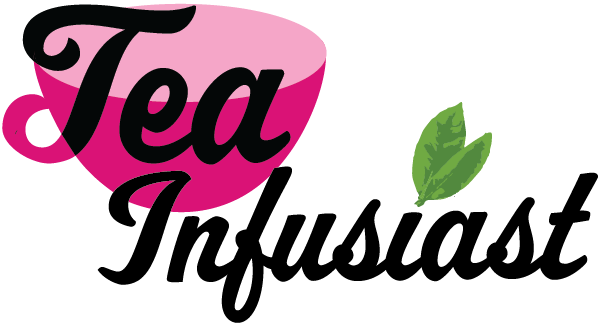Their flavor profiles, beauty, and more persuaded me to add persimmon leaf and magnolia blossom herbal teas into my tisane rotation at home.
I am a long time devotee of “real tea” (from the Camellia Sinensis plant) and relatively late to discovering herbal teas that I enjoy drinking regularly. No one was more surprised than I was when I wrote my first Herbal Tea Recommendations post a few months ago! Since then, I’ve found two new tisanes to add to my recommendations.
Note: always research any potential health risks associated with herbal teas before you try them.
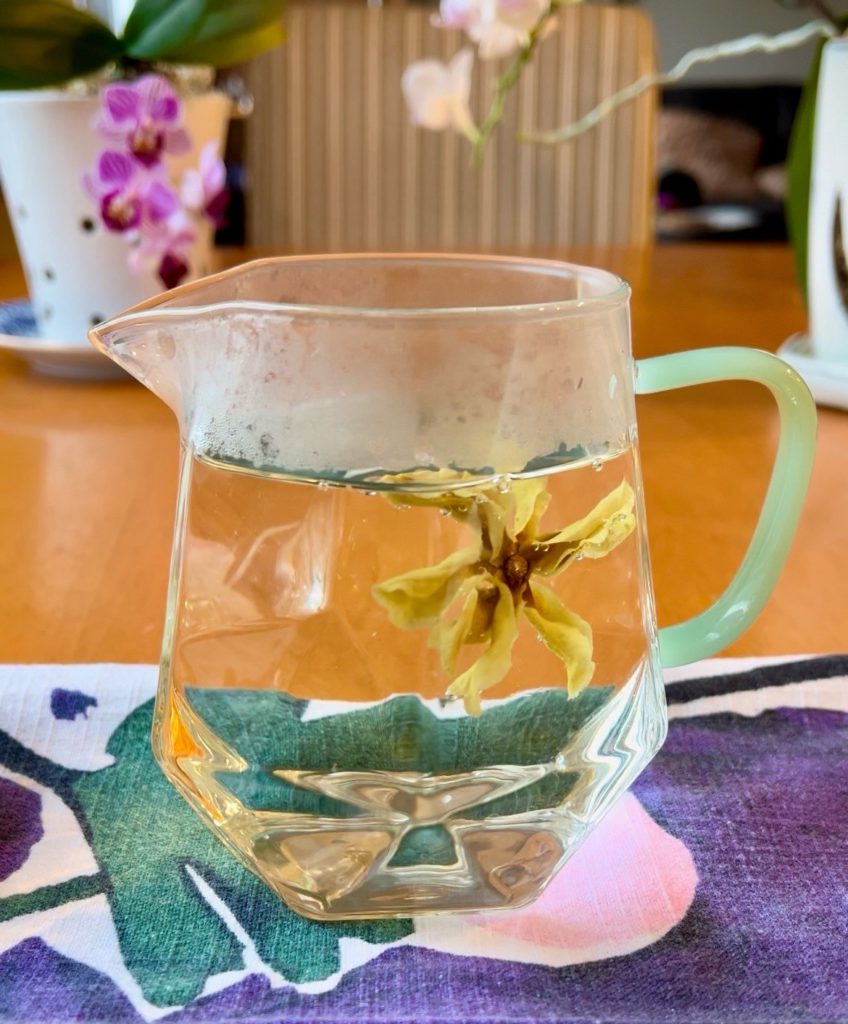
T-Shop Introduces Me to New Herbals
Not too long ago, I went into nearby NYC for a lovely “tea journey” session at T-Shop in the Nolita area of Manhattan. In addition to drinking “real” teas, I tried persimmon leaf tea. Although I had tried and enjoyed persimmon tea before, this one was different…and even more to my taste. I also purchased magnolia blossoms to try later.
Persimmon Leaf Herbal Tea
The first time I tried a persimmon leaf infusion, I was so skeptical. Before then, I only had a few reference points for persimmons.
The first time I heard of them was reading Mark Twain’s novel, The Adventures of Huckleberry Finn. Two of the main characters, Huck and Jim, comically decide that persimmons will be one of the two edible things they won’t steal anymore. Huck mentions he never liked persimmons anyway.
Years later, a neighbor kindly gave us some persimmons. Without any experience, I think we tried them when they were emphatically not ripe. They were bitter and incredibly astringent–not so pleasant to eat.
So, when first offered persimmon leaf tea, I wasn’t expecting to like it. But, I found it pleasant. At T-Shop, the persimmon leaves looked very different than the previous tisane I had. They must have been processed differently: the leaves were twisted and reminded me of oolong teas I have seen. The flavor was also deeper. And, I could taste a tantalizing base flavor.
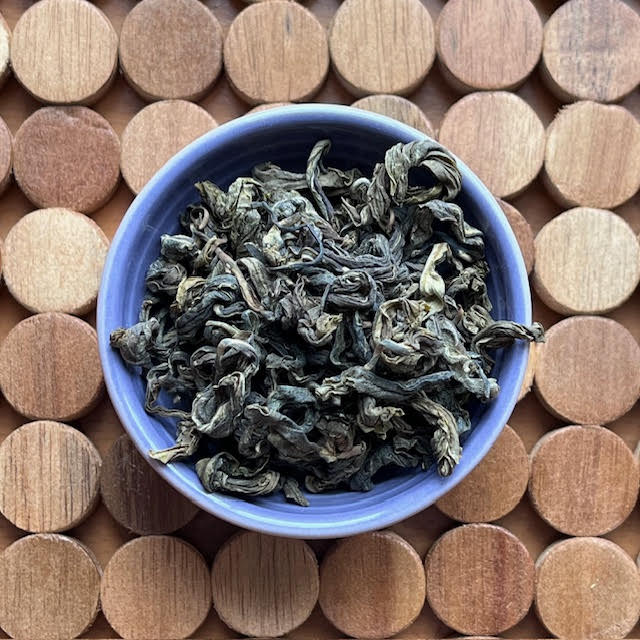
I identified that flavor as the pleasant note in persimmons I had previously tried but had not fully registered due to the extreme astringency in the unripe fruit. The steeped tisane does have a mild astringency-the pleasant kind that adds interest. The aroma and flavor in the persimmon leaf tisane remind me of lightly toasted Fruit Loops–if they had a gourmet version and it included persimmon. (I wish I had a reference that isn’t a children’s cereal. But, this is exactly what pops into my mind when I sip it.)
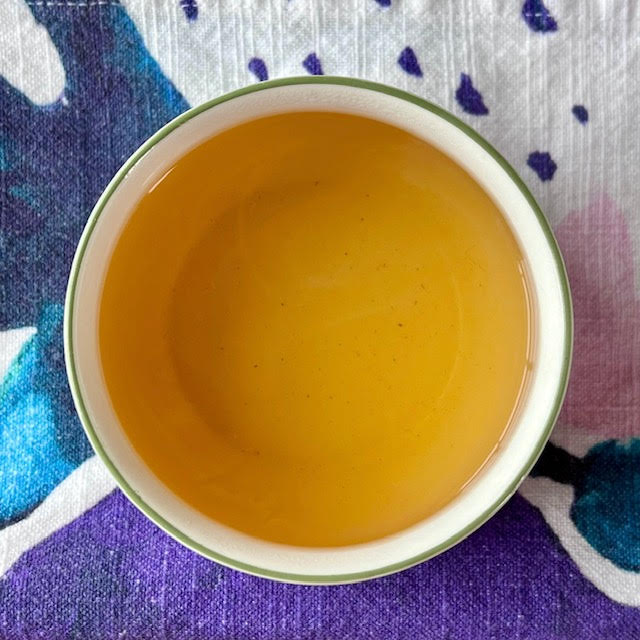
The more I drink this tisane at home, the more I love it. The twisted leaves, the color of the steeped tea, and even the depth of flavor reminds me very favorably of oolong teas. These factors definitely add to the pleasure of steeping and sipping it.
Magnolia Blossom Tisane
Although I’ve long admired the beauty of magnolia blossoms, I didn’t know until this year that some varieties are edible.
I can’t believe how flavorful they are! I steep one blossom a little under a minute in 300 ml of water. The blossom performs a beautiful dance as you pour the water over it.
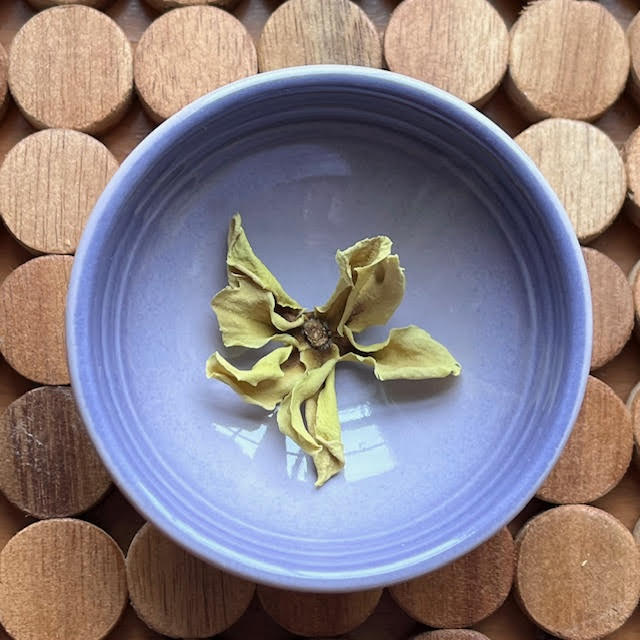
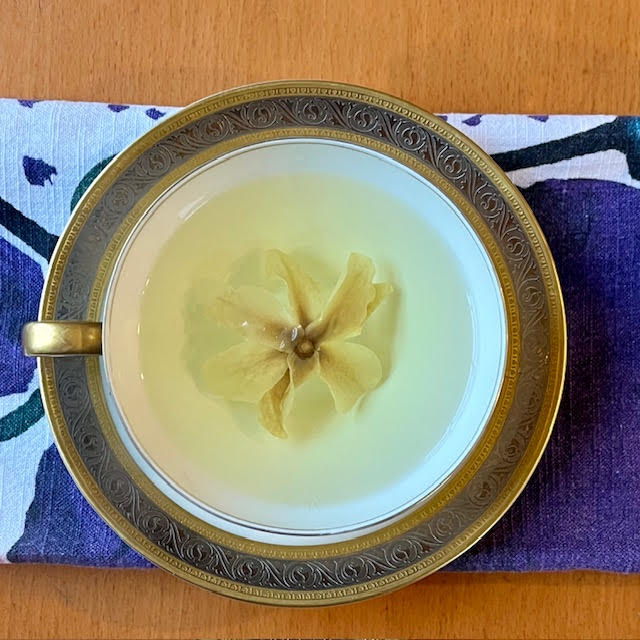
The tisane color is light but the flavor is potent. It tastes remarkably like ginger to me.
There are some health warnings for pregnant women to avoid this tisane, and other cautions worth checking out before you try…as with any herbal.
Your Experience?
Have you tried persimmon leaf and magnolia blossom herbal teas? What did you think? Any steeping tips you’d like to share?
